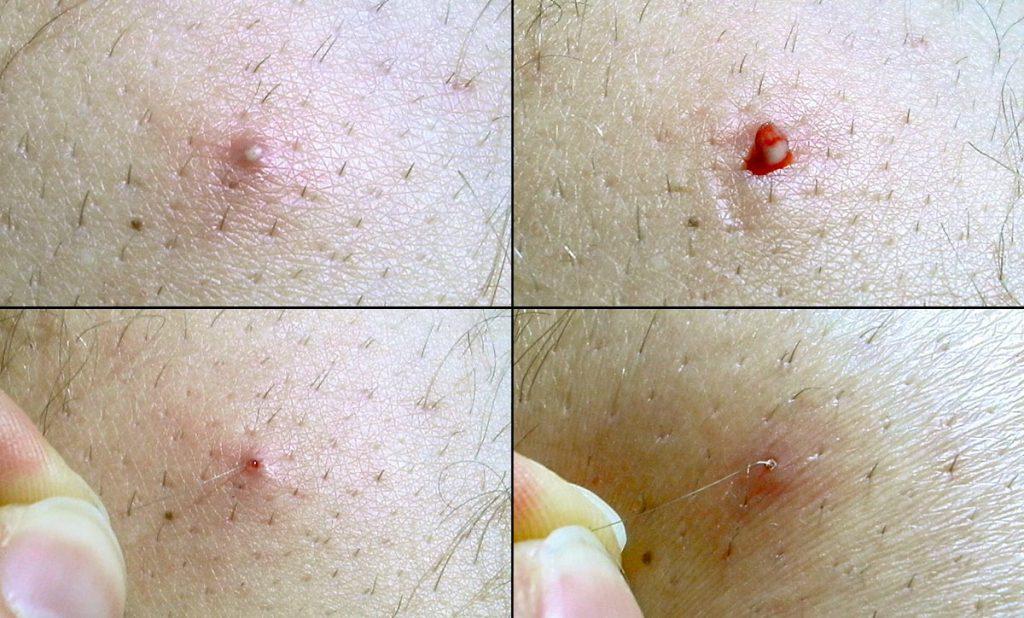Ingrown hairs are a common and often frustrating side effect of shaving, affecting individuals across all skin types and hair textures. While they may appear as small, inflamed bumps, their impact can extend beyond mere skin irritation, leading to discomfort and even infection if not addressed properly. Understanding how to effectively treat ingrown hairs is essential for maintaining healthy skin and ensuring a smooth, irritation-free shave every time. In this guide, we will explore proven strategies and techniques to manage and prevent ingrown hairs, empowering you with the knowledge to keep your skin clear and comfortable. Whether you’re dealing with a stubborn ingrown hair or looking to refine your shaving routine, these expert tips will equip you with the tools needed to tackle this common issue with confidence.
Preventing Ingrown Hairs with Proper Shaving Techniques
Achieving a smooth shave without the pesky aftermath of ingrown hairs is all about mastering the right techniques. Start by ensuring your skin is well-prepped. Exfoliation is key; gently scrub the area to remove dead skin cells and free any trapped hairs. This not only helps the razor glide smoothly but also reduces the chance of hair curling back into the skin.
When it’s time to shave, keep these tips in mind:
- Use a sharp, clean razor: A dull blade can tug at the hair and cause irritation, leading to ingrown hairs.
- Shave in the direction of hair growth: This reduces the risk of hair being cut too short, which can cause it to grow back into the skin.
- Apply a quality shaving cream or gel: Opt for a product that provides good lubrication and minimizes friction.
- Rinse your blade frequently: Keeping the blade clean prevents bacteria buildup and ensures a close shave.
By incorporating these techniques into your shaving routine, you can significantly reduce the occurrence of ingrown hairs and enjoy smoother, healthier skin.

Effective At-Home Treatments for Ingrown Hairs
Dealing with ingrown hairs can be a nuisance, but there are several effective methods you can try at home to alleviate discomfort and prevent future occurrences. Exfoliation is a key practice. Gently scrub the affected area with a mild exfoliant or a homemade sugar scrub to remove dead skin cells that may be trapping hairs. Another helpful approach is to apply a warm compress to the area. This can soften the skin and hair, making it easier for the ingrown hair to break through the surface.
Additionally, consider using natural remedies such as tea tree oil or aloe vera. These have anti-inflammatory and antibacterial properties that can reduce swelling and prevent infection. Avoid tight clothing around the affected area to minimize irritation. If you’re prone to ingrown hairs, switching to a moisturizing shaving cream and using a sharp, clean razor can make a significant difference. Remember, patience is key, and consistently applying these methods can lead to smoother, healthier skin.
When to Seek Professional Help for Ingrown Hairs
While many ingrown hairs can be managed with home remedies, there are certain situations where seeking professional help becomes crucial. If you notice persistent redness, swelling, or pain that doesn’t subside with at-home treatments, it’s a sign that you might need expert advice. Additionally, if you experience repeated infections or if the ingrown hairs are causing significant discomfort or affecting your daily activities, it’s time to consult a dermatologist.
Consider reaching out to a professional when you encounter:
- Severe inflammation: If the area around the ingrown hair becomes intensely red, swollen, and tender.
- Recurring ingrown hairs: Despite following preventive measures, if ingrown hairs keep returning.
- Signs of infection: Presence of pus, increased pain, or warmth in the affected area.
- Scarring or hyperpigmentation: If ingrown hairs are leading to long-term skin changes.
Addressing these issues with a professional can prevent complications and lead to more effective treatment strategies tailored to your skin’s needs.
Maintaining Smooth Skin: Post-Treatment Care and Tips
After tackling ingrown hairs, nurturing your skin with proper care is essential to maintain its smoothness and prevent future occurrences. Start by gently cleansing the affected area with a mild, fragrance-free cleanser to avoid further irritation. Opt for a lukewarm water rinse instead of hot water to prevent drying out your skin. Once cleansed, apply a soothing moisturizer that contains aloe vera or chamomile to calm inflammation and hydrate the skin.
- Exfoliate Regularly: Use a gentle exfoliator 2-3 times a week to remove dead skin cells and reduce the likelihood of hairs becoming trapped beneath the surface.
- Wear Loose Clothing: Choose breathable fabrics to minimize friction and allow your skin to heal without additional irritation.
- Consider Topical Treatments: Products containing salicylic acid or glycolic acid can help to reduce redness and swelling, aiding in the recovery process.
- Avoid Picking: Resist the urge to pick or squeeze ingrown hairs, as this can lead to infection or scarring.
Implementing these steps into your routine not only soothes your skin but also sets the stage for smoother, healthier skin in the future.




